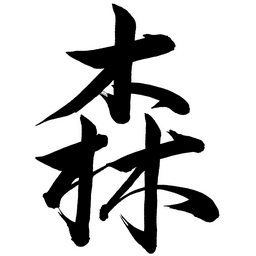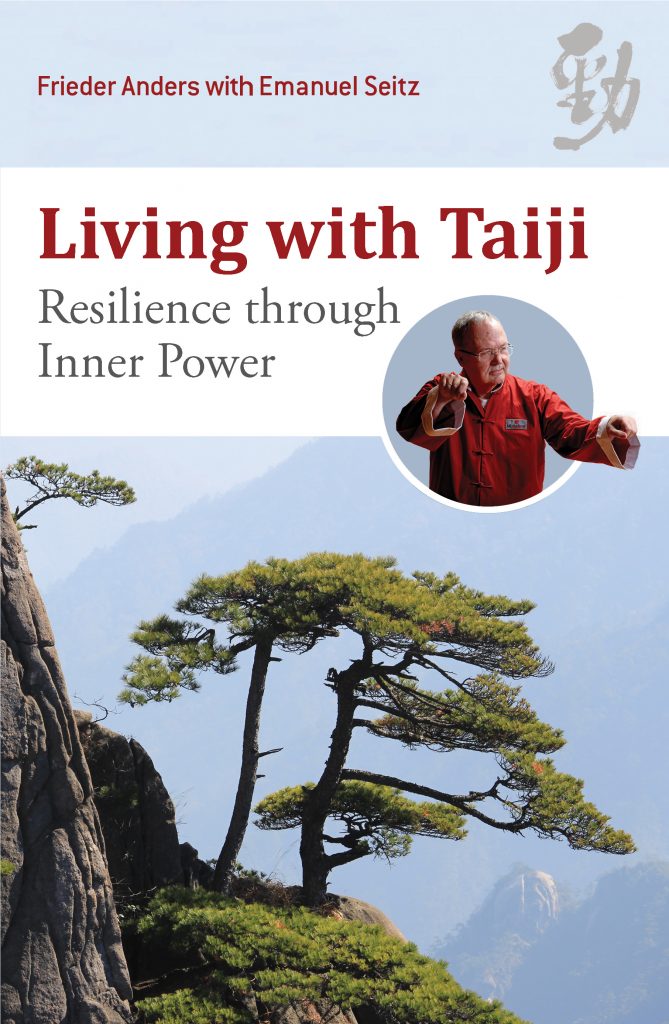PRAISE
In this powerful new work, Frieder Anders present valuable insights on the application of Taiji in daily living, based on decades of practice and teaching. Exploring Taiji in relation to modern culture, self-cultivation, sports, and medicine, he makes a strong case for innate breathing types that create inner power dominantly either on the inhale or the exhale. He shows how these types work affect positioning and moving the body, thereby opening new perspectives on learning and practice. Beyond the immediate application of inner power and resilience in daily living, the book also presents a detailed outline of key Taiji principles and, authored by Emanuel Seitz, a discussion of Daoist thought and its relevance. A wonderful guide and exciting source book, Living with Taiji is a must for anyone involved in this powerful Chinese art.
— Denise L. Meyer, Author of Swimming in the Sea of Qi: Following the Taiji Path to
Energetic and Spiritual Awareness
THE AUTHORS
Frieder Anders (b. 1944), grandmaster of Taiji, is one of the most famous teachers in Europe. A practitioner since 1973, he worked with the most important masters in East and West: Taiwan, New York, London, and Hong Kong. After twenty-six years of training with Grandmaster K. H. Chu (London), he was confirmed in 2002 as a 6th-generation master in the Yang-family style. In 1980, he founded the first German Taiji school in Frankfurt am Main, which still trains under his leadership as the “Taiji Academy – School of Inner Strength.” Besides teaching, he publishes books and essays and also produces educational films (www.tao4me.de).
Emanuel Seitz (b. 1985) works as a freelance philosopher and translator in Bad Kreuznach. He studied philosophy, archaeology, history, and Indo-European linguistics in Rome, Freiburg, and Frankfurtand received his doctorate from the University of Amsterdam. He has practiced Taiji with Frieder Anders since 2018 and is currently in his first year of teacher training. His most recent publication is List and Form: On Prudence (Klostermann, 2019) and a translation of Aristophanes’ Clouds (Residenztheater Munich, 2022).
CONTENTS
Part One—Taiji in Action == 1. What Is Taiji? — 2. The Internal Tradition — 3. Lineage Structures — 4. Practice, Study, Cultivate — 5. Sports and Games — 6. Weakness Wins — 7. Taiji and Medicine — 8. Breathing Types — 9. True Inner Power — 10. Testimonials by Master-Disciples
Part Two—Fundamental Concepts == 11. Basic Principles — 12. Inner Power — 13. The Daoist Perspective (by Emanuel Seitz)
CHAPTER ONE: WHAT IS TAIJI?
Everyone these days knows the yin-yang symbol, in Chinese is called Taijitu, that is, “the symbol or chart (tu) of the Great (tai) Ultimate (ji).” In many Eastern wisdom books or advertisements, it is usually used to mean something like the unity of opposites or an expression of inner harmony. The symbol appears on packaging for teas, cosmetics, organic food, as well as massage offers and wellness product—all kinds of consumer goods that promise well-being and balance. It expresses the cliché of relaxation culture and reduces human life to the values of inner peace, stillness, and serenity, but does not represent the art of Taiji. Its movements are gentle and relaxed, but their prime purpose is not relaxation.
The meaning of the symbol also goes deeper than the cliché of inner harmony. It expresses a polarity of complementary opposites that together form one whole. The whole day consists of the period of daylight and that of darkness: they are completely different yet form one whole. Similarly, the earth contains two poles, north and south, again being completely different. There is also no inner harmony between them moreover, but the tension of the magnetic field. This tension between two complementary opposites that yet join together to form a whole is represented in the Taiji symbol.
The higher unity of opposites is called the great ultimate in Chinese cosmology, where it first appears in the Yijing (Book of Changes). It shows both the highest principle and the fundamental way of working of the cosmos. Something arises, reaches its pinnacle, then declines. Once the decline is complete, its opposite arises, and the cycle continues. Where there is a force, the must always be a counterforce. These complementary polarities, these integrative opposites, have to come to together to form the whole of anything in the world. As pure forces, they are called yin and yang. This symbol accordingly shows yin as the dark part, representing the principle of compression and condensation of force, while yang appears as the light section, indicating the principle of expansion and the release of power.
Taiji, in other words, is about much more than a mere feel-good ad to sell a wellness product to the receptive public. But enough philosophy already! Let us take a look at Taiji as a movement art and see how it works with the unity of opposites. The full name of the method is Taijiquan. The last word, quan, literally means “fist” and by extension “fighting” or “martial,” but in its broadest sense it refers to intentional movement in a set sequence. That is, Taiji—the common abbreviation for the full term Taijiquan—always comes in specific forms, the heart of the entire system.
Some people see Taiji in the context of human movement as sport. And while it shares some of these characteristics, it is also not sport. Westerners tend to see sport as a way to control and enhance the body in a rather one-sided way. Here the body is merely as a tool toward a perfect performance, the realization of an ego that controls it, challenges it at will, and pushes it to its limits. That is, Westerners typically view the body as a machine that has to work until muscles and tendons are exhausted. Through sports training, the machine optimizes its performance, measured systematically by pedometers, heart rate monitors, training apps, or amphetamines.
Taiji is not sport in this sense, but presents a strong alternative for people who find the dominantly mechanistic approach to the body one-sided and lacking. Here the body and its movements are perceived as an integrated organism that has a life of its own. So stop using dumbbells, looking at the stopwatch, or holding on to the smartphone! You don’t need to have such a level of control over your movements to do Taiji. The smooth flow of the motor processes activated during practice does not aim at increasing the performance of the body as machine, even though it may well begin to function better. Also, there is no question that the body can also be viewed as a machine in Taiji, matching the mechanics as they have been successfully studied over the past several centuries and are the subject of sciences such as biomechanics. Taiji does not contradict the findings of science—on the contrary.
However, there is a great deal more to Taiji, and the mechanics are not the only truth. In addition to the mechanical body that one has, there is also the organic body that one is. The latter eludes conscious volition because it cannot be intentionally posited and has its own independent organic life. Taiji unites the two and makes both accessible. On the one hand, it teaches how to control the body with its biomechanics; on the other, it creates space to its organic flow. In other words, practitioners train the body materially as an object of biology and at the same time energetically as the place where vital energy or qi flows. Thus develops the entangled unity of having and being a body.
It is like a miracle. When learning the movements, we put the processes together almost mechanically, but over time the organic flow of the movements emerges—as if of itself—guided purely by consciousness. We can let go of ourselves, release into the flow of the movements, as focused yet open attention increasingly takes over the task of controlling the body. This attention must never flag. As we practice Taiji, we must never switch off the mind even after we have learned the movements and surrendered to the feeling of flow, maybe supported by some Chinese-type background music. The mind must always be one step ahead of the movements throughout our whole life in Taiji.
The whole of Taiji is therefore both: a material body mechanism that we can control and an energetic-organic event that we can desire but not manipulate. This energetic event has a life of its own that we can only allow. We should always try to consciously perceive this life of our own and not lose ourselves in it. Instead of using the terms “material” and “energetic,” one could also say that Taiji has both, a comprehensible and tangible aspect.

